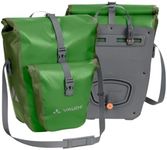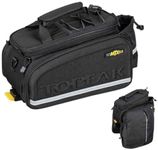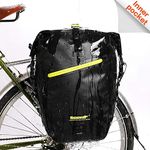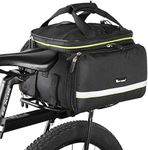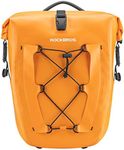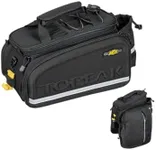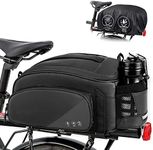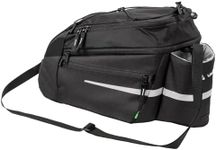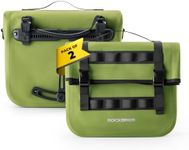Buying Guide for the Best Bike Trunk Bag
Choosing the right bike trunk bag can greatly enhance your cycling experience by providing convenient storage for your essentials. Whether you're commuting, touring, or just enjoying a leisurely ride, a trunk bag can help you carry your gear safely and comfortably. When selecting a bike trunk bag, consider the type of riding you do, the amount of storage you need, and how the bag will attach to your bike. It's important to find a balance between size, durability, and ease of use to ensure the bag meets your specific needs.CapacityCapacity refers to the amount of space available inside the trunk bag, usually measured in liters. This is important because it determines how much you can carry with you on your ride. Smaller bags, around 5-10 liters, are suitable for short commutes or carrying essentials like a repair kit and snacks. Medium-sized bags, 10-20 liters, are great for longer rides or carrying additional items like a change of clothes. Larger bags, over 20 liters, are ideal for touring or carrying bulkier items. Consider what you typically need to carry and choose a capacity that accommodates those items without being too bulky.
MaterialThe material of a bike trunk bag affects its durability, weight, and weather resistance. Common materials include nylon, polyester, and waterproof fabrics. Nylon and polyester are lightweight and durable, making them suitable for everyday use. Waterproof materials are essential if you frequently ride in wet conditions, as they protect your belongings from rain. If you need a bag for all-weather use, look for one with waterproof or water-resistant properties. Consider the conditions you'll be riding in and choose a material that offers the right balance of durability and protection.
Attachment SystemThe attachment system is how the trunk bag secures to your bike, typically to a rear rack. This is important for stability and ease of use. Common systems include Velcro straps, clips, and quick-release mechanisms. Velcro straps are versatile and easy to use, but may not be as secure as other systems. Clips and quick-release systems offer more stability and are quicker to attach and detach, which is useful if you frequently remove the bag. Consider how often you'll need to remove the bag and choose an attachment system that offers the right balance of security and convenience.
Compartments and OrganizationCompartments and organization refer to the internal and external pockets and dividers within the trunk bag. This is important for keeping your items organized and easily accessible. Some bags have a single large compartment, while others offer multiple pockets and dividers for better organization. If you carry a variety of items, look for a bag with multiple compartments to keep things organized. If you prefer simplicity, a single compartment may suffice. Consider how you like to organize your belongings and choose a bag that meets those needs.
Reflective ElementsReflective elements are features on the bag that enhance visibility in low-light conditions, such as reflective strips or logos. This is important for safety, especially if you ride at night or in low-light environments. Reflective elements help make you more visible to other road users, reducing the risk of accidents. If you often ride in the dark, look for a bag with ample reflective elements. Consider your riding conditions and prioritize safety by choosing a bag with adequate visibility features.

